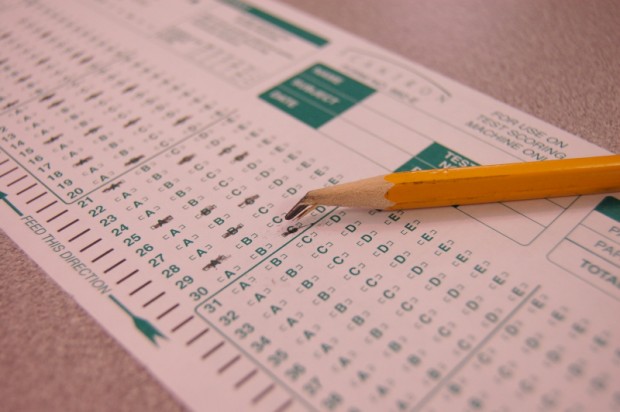Nation’s Report Card: Indiana Students Boost Science Scores, But Gaps Remain

Indiana students are showing gains on a national test, but achievement gaps remain. (Fort Worth Squatch/Flickr)
Indiana students are showing gains in fourth grade and eighth grade science scores, and continue to exceed the national average on a closely watched national test.
Despite gains, large achievement gaps remain between white students and their black and Hispanic classmates, according to results released Thursday. While some gender gaps have closed nationally, they are not closing as quickly in Indiana.
Those takeaways come from 2015 scores on the National Assessment of Educational Progress’ standardized science tests. NAEP, which has gauged student achievement since 1969, is the country’s most consistent measure of K-12 progress.
It’s often referred to as the nation’s report card.
“Our fourth and eighth grade students have improved their performance in science since 2009,” says John King, U.S. secretary of education, on a phone call with reporters. “It is especially encouraging that nearly all racial and ethnic groups have made gains over the last seven years. ”
Nationally, 37 percent of fourth graders and 33 percent of eighth graders were rated proficient or higher. In Indiana, 42 percent of fourth grade students and 36 percent of eighth grade students scored proficient or higher on the 2015 science test, outscoring national averages.
And nationally, many achievement gaps have lessened.
But while a gender gap has vanished for fourth grade students nationally, Indiana boys still score higher than Indiana girls: an average eight points higher in eighth grade and two points higher in fourth grade.
And Indiana has the largest gender gap in the nation on the eighth grade public school science scores. And it has the 11th largest gap between male and female fourth graders.
“I think that there is more to be concerned about than excited,” said Adam Maltese, associate professor of science education at Indiana University, in an email. “While students from all groups showed gains, there are still really large gaps between various racial/ethnic groups that shouldn’t be ignored.”
According to the data, Indiana white fourth grade students scored 33 points higher than black students and 21 points higher than Hispanic students. White eighth grade students score 37 points higher than black students and 23 points higher than Hispanic peers.
But it’s not all negative.
Scores are up, on average, across the state and nation. More students are now rated proficient in science than in 2009.
“There have been some shifts in the standards in IN (and in other states) during this time,” Maltese said. “Also, there’s the chance that students are learning more through improved teaching and materials.”
In a phone call with reporters, U.S. Secretary of Education John B. King Jr. says it’s hard without further research to pinpoint exact causes. He credits the nationwide growth to a variety of factors.
“Significant investments in pre-K, and quality early learning, to be exposed to the STEM field through clay and developmentally-appropriate experiences,” King said. “Certainly having high learning standards matters, having well prepared teachers matters.”